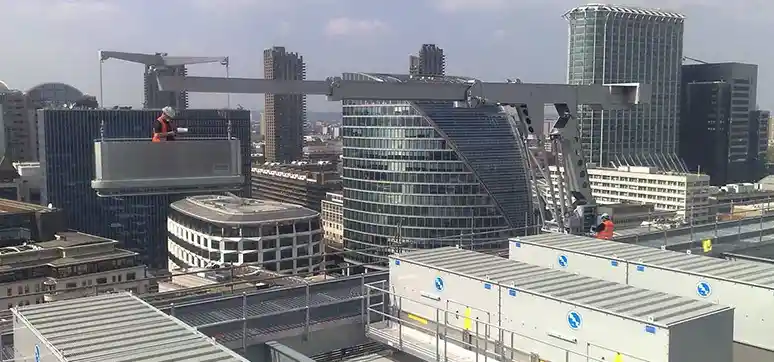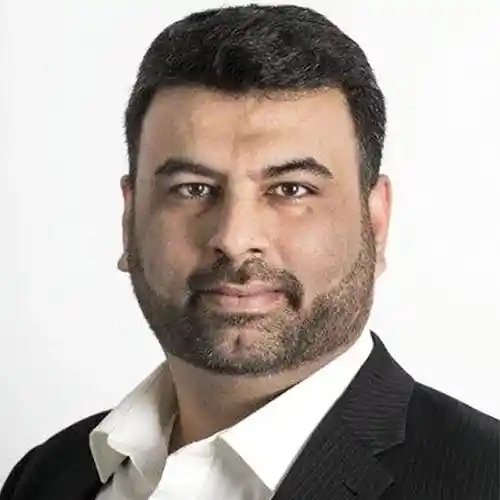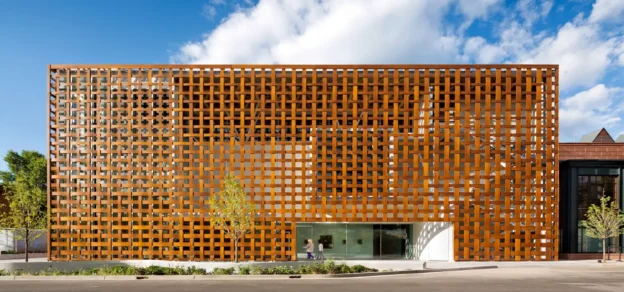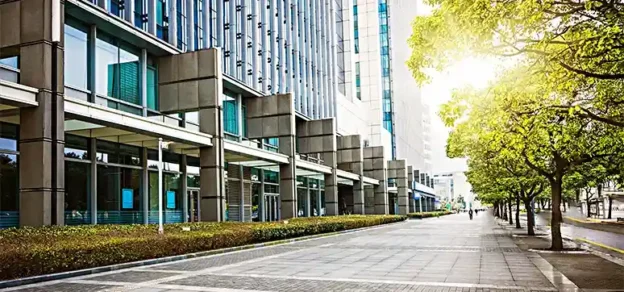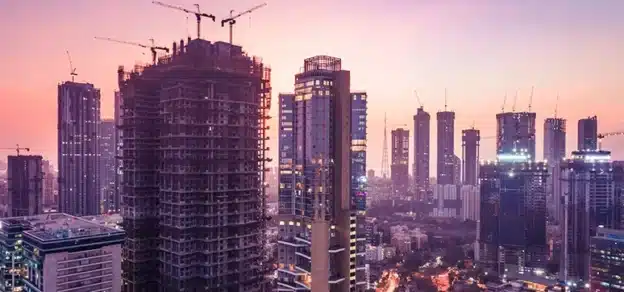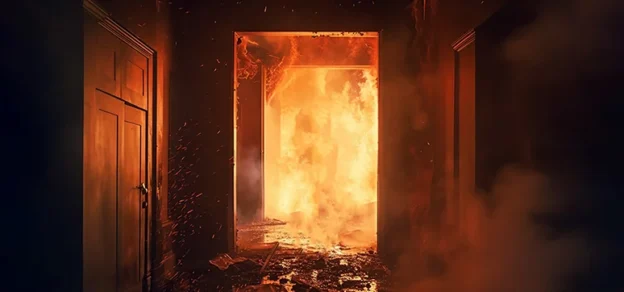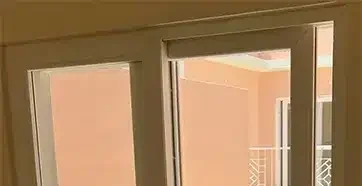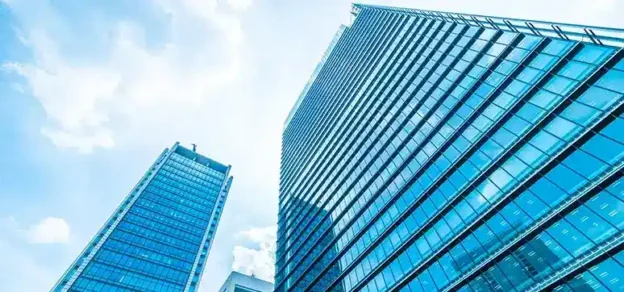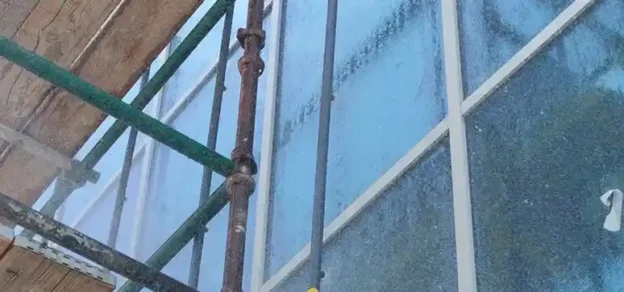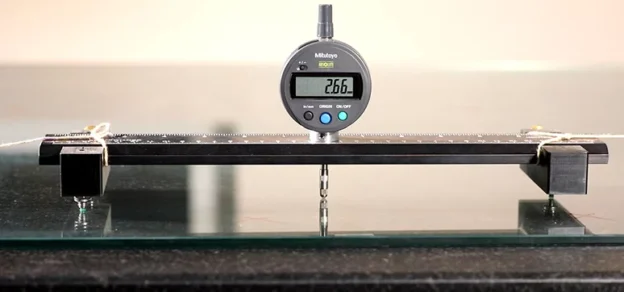Importance Of Façade Access
Architecture is constantly evolving with increasingly challenging building envelopes and maintainability is one of the key aspects when detailing the iconic façade. Practical, economical and effective maintenance of the façade is a prime concern in the overall design concept.
The development of a façade access solution is a long-term process and the building maintenance strategy will be in place for the life of the building. Façade cleaning and maintenance has also evolved, using bespoke systems blended within the tight operating space whilst meeting the ever increasing demand for replacing façade panels and plant components during the service life of the development.
Façade access is highly specialised and niche industry with very limited expertise on global scale and sector-wide experience within the construction industry.
Design Implementation Of Façade Access Systems
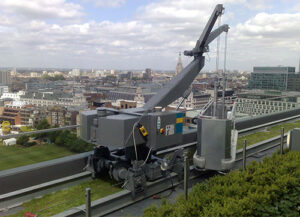
Façade maintenance varies from regular cleaning of the glazing to significant replacement of failed panels. Once the options to avoid working at height, set out in the working at height hierarchy, have been exhausted, then façade access equipment, whether it is temporary or permanently installed on the building can be employed to achieve the required access. Operatives are exposed to the hazard of falling from height. This may happen when:
• Safe access points in and around the FAE are not considered
• Structural failure
• Accidental tipping when the FAE snags on the building façade
• Exposed to the hazard while installing the system or while maintaining the system
• Risk to general public in the vicinity of the FAE i.e. hazard of being struck by falling objects
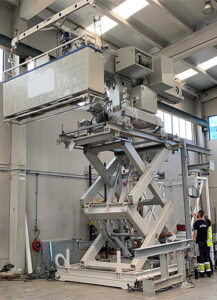
The options for access are from the top down or bottom up. For low rise developments, up to 40m, Mobile Aerial Work platforms can be employed providing sufficient consideration is given to the landscaping to allow the machines area to work. Above this level top down building maintenance units (BMUs) come into their own. At one time the roof was the preserve of MEP and the space required for a BMU was easily found at the edge of the roof, this allowed smaller lighter machines to be employed for access to the façades.
As roofs evolved to become either the 5th elevation or communal spaces with terraces, gardens and penthouses the competition for floor area meant that the traditional areas available became more constrained. This frequently led to a longer reach single BMU located on the core of the building leaving the perimeters free and unobstructed. These machines are larger and heavier but with the load borne by the strongest part of the building.
Regardless of the position of the BMU on the roof building, coverage can be a particular problem on buildings with complex façades. Twisting facades create problems of their own and sky bridges create a similar dead area as balconies. Counter-weighted cradles for under-hanging areas, and separate systems for inset areas will add weight and cost to the machines or additional systems to the building. The challenges caused by complicated facades become magnified when adding glass replacement into the equation.
Glass Replacement
An increasingly common option is to use the BMU to replace the glazing or other sections of the façade with the facility of an auxiliary hoist in addition to the cradle for the operatives. (Note: Total suspended load on glass lifting winch is limited to 1 ton as per BS EN 1808). The reality is that once glass has been installed it will generally last beyond the lifetime of the building unless subjected to an external force. After practical completion of a building the breaking of individual panes of glass is relatively rare with instances of warranty failure being a more likely reason for panels to be replaced.
In some instances, glazing panels are replaced internally (due to internal beading or within balcony zones) however the panel is delivered externally due to restricted lift or lobby sizes. Clear operating zone will be required for transporting glazing manipulator within the building to the location where replacement is required.
Façade Loadings
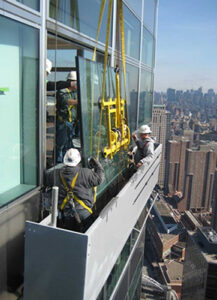
In general operation the cradle of the BMU will lightly touch the façade unless an external force is placed upon it. In normal operation the only external force will be the wind. The use of the cradle is limited by the wind speed. In general, the equipment shouldn’t be used if the wind speed is likely to exceed 12m/s (25 mph) this equates to a Force 6 (strong breeze) on the Beaufort scale.
On the weather side of the building, suspended platform will be held against the façade and the wind loading will be the same. On the lee side, the cradle is shielded from the wind. The building sides have the most risk, but the suspended platform is presented end on with its smallest profile. The lee corners of the building can be the worse points as a rotor. Solar shading fins, louvers and brise soleil can also pose problems with the loads on them being localised
Structural Loading
The effects of ‘in-service’ and ‘fall arrest’ (overload / overspeed / accidental) loads imposed upon the building structure from the operation and storage of façade access equipment are significant and should be coordinated with the structural engineers throughout the design process. Load paths through the structure should be accounted for when evaluating the reactions of the façade access systems in all its operational and stored positions when fully loaded. Equipment connections to the structure should be welded, bolted, or cast in place. The attachment method should be defined during early design stages so that correct provision to periodic inspect of the fixings are integrated within the roof finish.
Safety and stability factors are determined by local codes and industry standards and should be incorporated in the design calculations of the access equipment and building structure. This is particularly important for steel structures due to the possibility of beam torsion and the necessity of additional reinforcing steel in those areas. BS EN 1808 recommends the BMU-specific factors be applied to the design loads for the super structure
